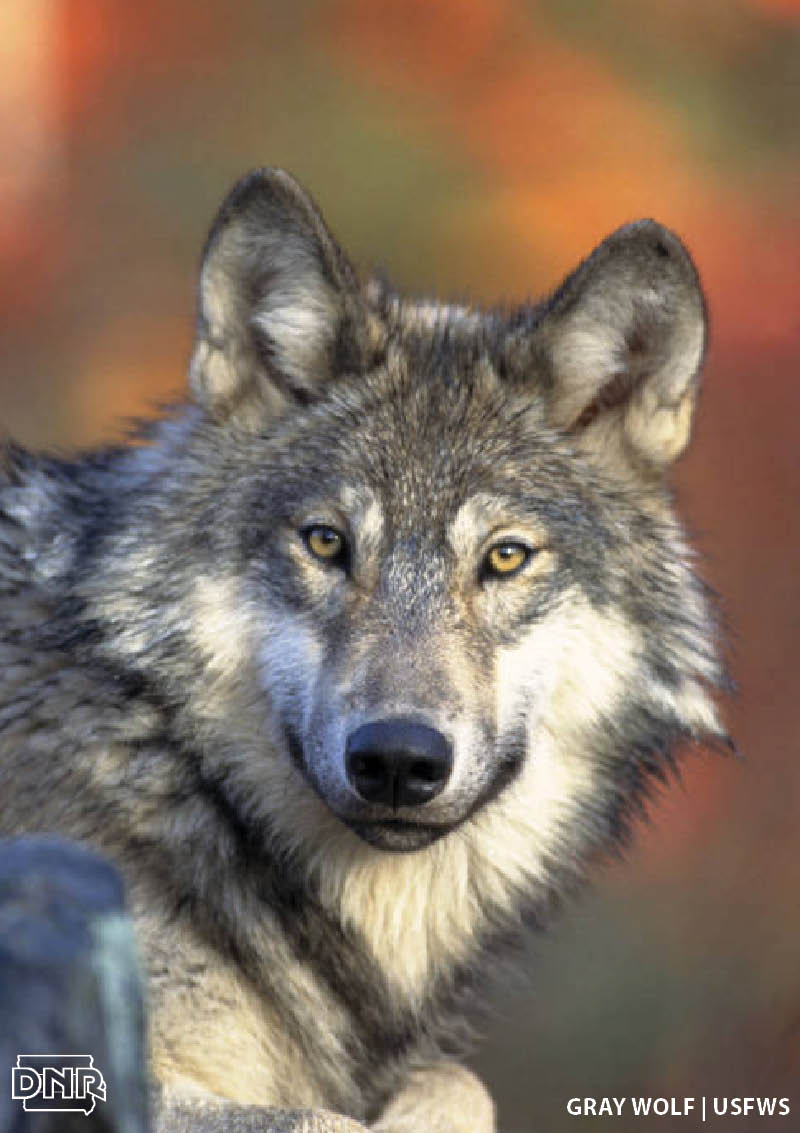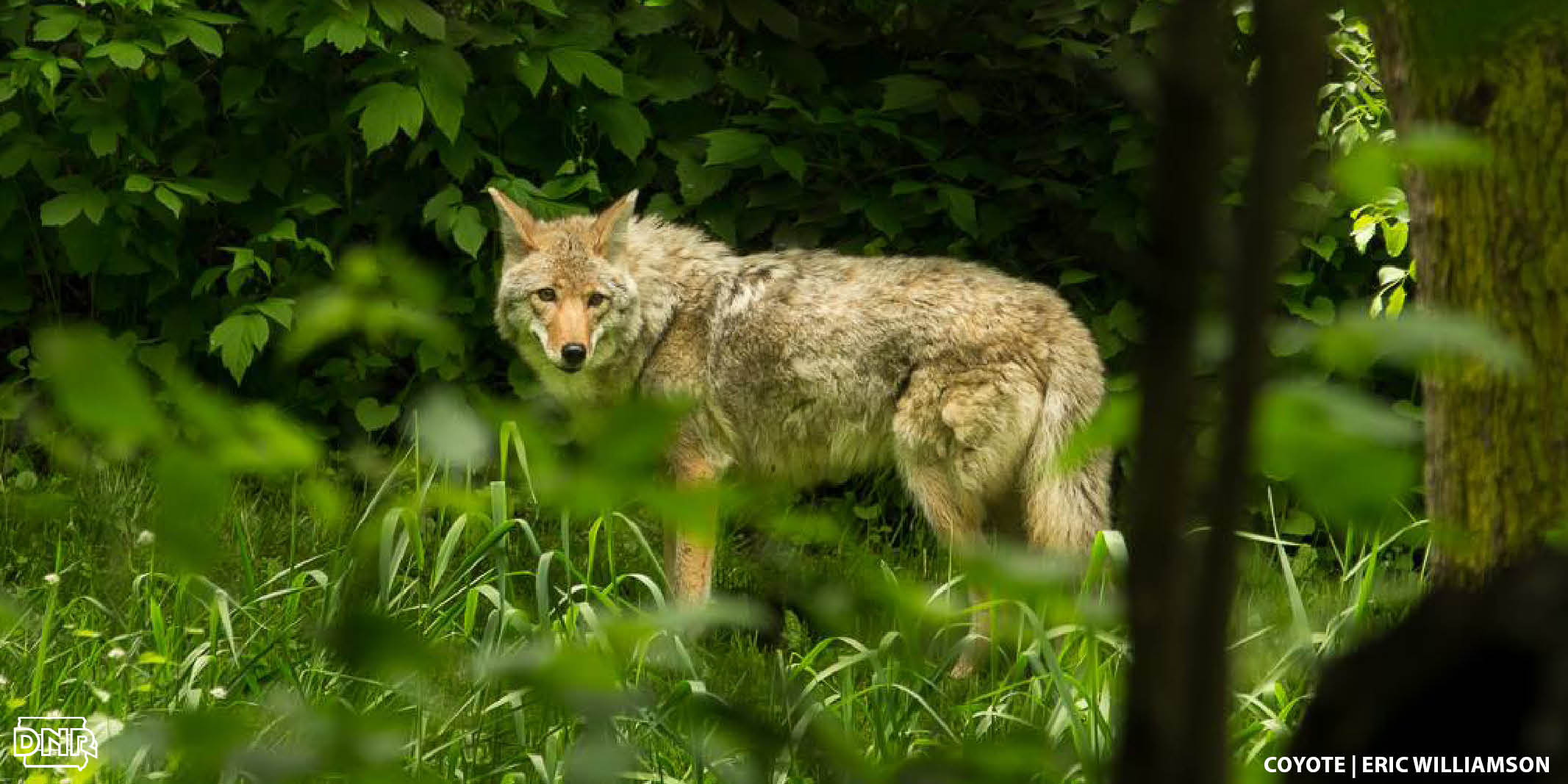 Iowa hasn’t been a consistent home for many large predators since the early 1900s, but healthy wolf populations from the Great Lakes Region are expanding their ranges and some were noted in eastern Iowa counties last year. However, there is still no established breeding population of gray wolves in Iowa, meaning they are still uncommon in our state. These gray wolves are an endangered species at the federal level, meaning there is no legal hunting season on them. This can pose difficulties for hunters who mistake them for coyotes, as licensed hunters have an unrestricted open season for coyotes in Iowa. Correct species identification is crucial to avoid legal trouble a hunter would encounter by accidentally shooting a wolf roaming in Iowa. Look for the tell-tale traits below to know just what canine you’ve spotted – it may be rarer than you think.
Iowa hasn’t been a consistent home for many large predators since the early 1900s, but healthy wolf populations from the Great Lakes Region are expanding their ranges and some were noted in eastern Iowa counties last year. However, there is still no established breeding population of gray wolves in Iowa, meaning they are still uncommon in our state. These gray wolves are an endangered species at the federal level, meaning there is no legal hunting season on them. This can pose difficulties for hunters who mistake them for coyotes, as licensed hunters have an unrestricted open season for coyotes in Iowa. Correct species identification is crucial to avoid legal trouble a hunter would encounter by accidentally shooting a wolf roaming in Iowa. Look for the tell-tale traits below to know just what canine you’ve spotted – it may be rarer than you think.
Colossal Canines
Wolves are significantly larger than coyotes in every dimension. Coyotes can reach shoulder heights of approximately 20-22 inches, whereas gray wolves stand about 27-33 inches. Coyotes also top out at a nose-to-tail length of about four feet, but gray wolves can reach over six feet in length. Adult coyotes typically weigh 30-40 pounds, whereas gray wolves from the Great Lake Region typically weigh 70-100 pounds. That’s about the size difference between a golden retriever and a Saint Bernard, although not every animal will be so large. Coyote tracks are usually 2.5 inches in length, and gray wolf tracks can be up to five inches long. It’s important to remember wolves are rare and some large dog breeds leave tracks as big or bigger than those of wolves, so a large canine track is likely more indicative of a neighbor’s pet than a wolf in Iowa. Lastly, wolves generally look stockier than coyotes, with bigger legs and bodies.
Overall Appearance
As it’s said in fairy tales, what big ears wolves have… or not. While coyotes are smaller than wolves overall, they have proportionally larger and pointier ears relative to their heads. Gray wolves’ ears are rounded and look fluffier than a coyote’s, as does the rest of the head. Wolves and coyotes also tend to have similar colored coats. Gray wolves, as their name implies, often have the gray color phase, but that includes both light and dark shades with some wolves being black or nearly white. Coyotes are also grayish, but they usually have more of a brown or tan tone, particularly on the legs and tail.
 Vocal Variance
Vocal Variance
Both wolves and coyotes howl to communicate with other members of their species, but wolf howls are much more consistent in pitch. The howl of a wolf is usually also longer, lower and somber-sounding. If there’s a yipping, yelping or excited quality to a howl your hear, or it’s high-pitched, it’s likely a coyote. Other quasi-howling night sounds may be from foxes or owls.
Urban Attraction
Coyotes are much more adapted to the presence of people, and more likely to come into urban or suburban areas looking for food. Wolves are more skittish, avoid people and stick to quieter forested areas. Even if you happen to come across a wolf in person (which is extremely unlikely, as wolves are rare and there have been no documented cases of wolves threatening the safety of humans in Iowa for the last 50 years), they are easily frightened off by loud noises and aggressive motions like hand waving and stomping. Try to avoid all wildlife altercations by being aware of your surroundings in wild areas, making noise and recreating with friends. Enjoy the outdoors!
Even with these differences, coyotes and gray wolves both play crucial ecosystem roles and help to control prey populations. While wolves are more capable of hunting larger prey, their numbers in Iowa are so low that their presence is not expected to heavily reduce deer populations in the state. At this time, we estimate there to be five or fewer wolves in the entire state of Iowa at any given time. Time will tell if this number trends upwards or not. Still, the next time you see an Iowa canine you might want to look a little closer – you could be witnessing the return of a majestic Iowa predator population.
For more, check out our Iowa Wildlife and Iowa Hunting boards on Pinterest.
